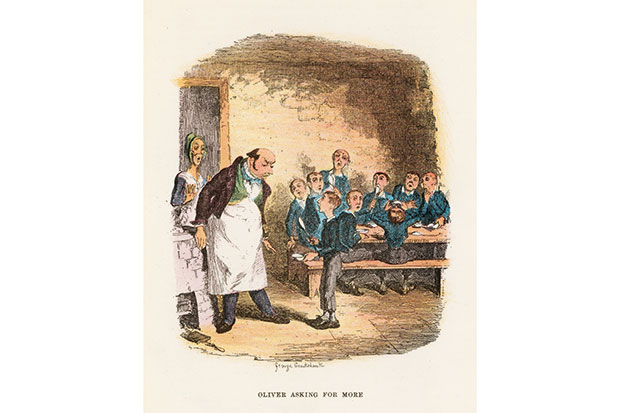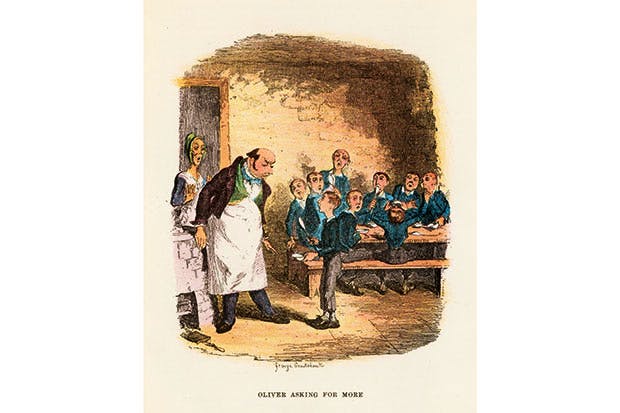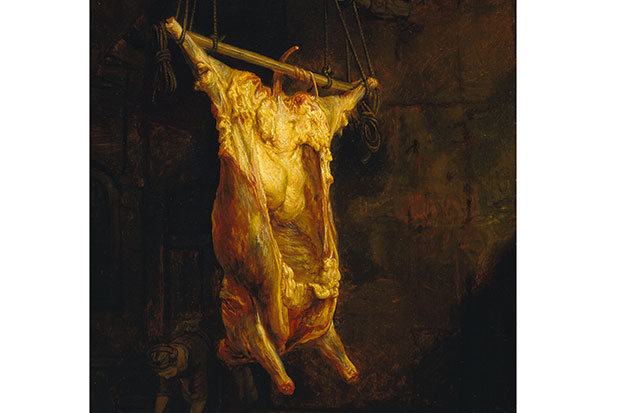Modern Britain scratches its head over children who are overfed, not underfed, while guilt-ridden mothers stand accused of feeding children badly even if they are not obese. These are not insignificant troubles since childhood obesity is set to cost the NHS many millions in years to come. But as a new exhibition at the Foundling Museum in London will show, infant and child nutrition is not a new science and the challenge of nurturing, not least keeping children alive before the age of five, was taken just as seriously two centuries ago as it is now.
Feeding the 400 is the first show at the museum, built on the site of the former Foundling Hospital (established in 1739, and closed in 1954), to examine how the many young boys and girls in the hospital were nourished. The place itself was established to house, feed and educate unwanted, mostly illegitimate, children who had been left there as babies. At one point nearly 800 lived under its wing.
Yet as the exhibition will show, the Foundling Hospital took a great deal of care with the welfare of the children and was a very different place from the workhouses (and gruel) that would inspire Dickens’s Oliver Twist. The exhibition’s curator Jane Levi worked from a vast number of documents, images and also recordings made with children in the 20th century, describing the latter as an extraordinary, must-visit-to-hear archive.
‘The fair number of records show that it was run by a typical bureaucracy who wrote down every detail,’ says Levi. ‘The records cover the full 200-year history of the Foundling Hospital, describing everything from infant feeding to older children. We can see on a daily or weekly basis what was ordered, what arrived, how much was spent and can also see the diet tables,’ she adds.
Through most of its history, the hospital only accepted children abandoned by their parents, usually mothers, as babies under four months. The babies would then be placed with a wet nurse who would take them out of London to the surrounding countryside for the first four to five years of their life. The alternative was a ‘dry nurse’ equipped with a cow horn and affixed teat, from which the baby could take milk or soft wet cereals, but records show the outcome for wet-nursed babies to be dramatically better.
Our modern fussy eaters would have suffered. Food was good but plain, and there would be very little variation. Meals were based on boiled or stewed meats (not pork or chicken) and either bread, grains, suet or potatoes. As Jane Levi points out, ‘ditto’ features a lot on the meal tables.
Breakfast would be 4oz bread, ½oz butter and 1.5 quart of milk — every day. The noonday meal was the main one of the day and would vary a bit. Typical was 8oz stewed beef, served with bread; or a suet pudding, or rice pudding. On Sundays there would be 10oz boiled mutton, with potatoes and half a pint of light ale. Supper was bread and cheese.
If this sounds like basic fuel with few vitamin-rich vegetables or fruit, there is a note added suggesting fresh greens when in season. The Hospital is known to have had a very large vegetable garden in which cabbages, potatoes, turnips, radishes, beans, cos lettuce, peas, potatoes, cress and spinach were grown. On high days and holidays the menu might change, with fruit puddings or something sweet added.
The description of this place has its uncomfortable side. Levi says she found accounts of five-year-olds being separated from their country-dwelling wet nurses very poignant, since these children had already been separated from their birth mothers.
There is also an underlying element of human experiment. Children’s health was closely monitored, their illnesses recorded, including treatment, and special attention given to their bowels. They were fed a lot of rhubarb — dubbed the emetic of the age of reason.
Governors of the charity and other callers would visit the foundlings at their mealtimes, and other benefactors would write inquiring as to their current health and educational progress. Their future was ‘in service’, employed by the well-to-do, though some of the more musical entered military bands, thanks to Handel’s involvement. The Victorians in particular believed in a healthy workforce.
In 1954, when the hospital closed to make way for modern foster care and adoption services it was about time, but the institution had set a great example of human compassion. We need to use the same, not gimmicks like the sugar tax, to address our current troubles.
The post Food of love appeared first on The Spectator.
Got something to add? Join the discussion and comment below.
Get 10 issues for just $10
Subscribe to The Spectator Australia today for the next 10 magazine issues, plus full online access, for just $10.
You might disagree with half of it, but you’ll enjoy reading all of it. Try your first month for free, then just $2 a week for the remainder of your first year.














Comments
Don't miss out
Join the conversation with other Spectator Australia readers. Subscribe to leave a comment.
SUBSCRIBEAlready a subscriber? Log in